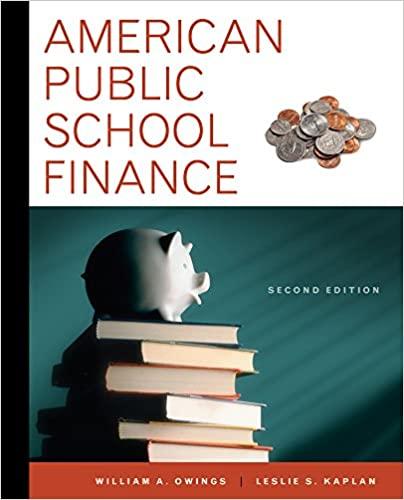
= = 2. Consider a firm with a risk-neutral entrepreneur that has assets in place and debt with face value K - 110, due at date t = 1. The assets in place generate at t = 1 a random, verifiable cash flow X {90, 130} with Pr(X = 90) = Pr(X = 130) = ]. In addition, the firm has an investment opportunity. The investment requires an outlay F = 10 at date t = 0 and generates an additional return Y with certainty at date t = 1. There is no discounting (all risk is diversifiable and the risk-free rate is zero). Finally, the entrepreneur is protected by limited liability and has personal wealth W > F that is not invested in the firm and may thus be used to finance the investment outlay F. 1. At which condition would the entrepreneur set up a new firm and finance the invest- ment? 2. From now on assume that the project has to be undertaken inside the existing firm, i.e., that the cash flow of the investment cannot be separated from that of the assets in place. State the condition(s) under which the project is undertaken in the absence of renegotiation. Comment. 3. Suppose that the project can be financed through senior debt. Under what con- ditions is the entrepreneur willing to undertake the project? If existing creditors had a covenant that prevents the issuance of senior debt. Would existing creditors renegotiate the terms of their contract and waive the covenant? 1 = = 2. Consider a firm with a risk-neutral entrepreneur that has assets in place and debt with face value K - 110, due at date t = 1. The assets in place generate at t = 1 a random, verifiable cash flow X {90, 130} with Pr(X = 90) = Pr(X = 130) = ]. In addition, the firm has an investment opportunity. The investment requires an outlay F = 10 at date t = 0 and generates an additional return Y with certainty at date t = 1. There is no discounting (all risk is diversifiable and the risk-free rate is zero). Finally, the entrepreneur is protected by limited liability and has personal wealth W > F that is not invested in the firm and may thus be used to finance the investment outlay F. 1. At which condition would the entrepreneur set up a new firm and finance the invest- ment? 2. From now on assume that the project has to be undertaken inside the existing firm, i.e., that the cash flow of the investment cannot be separated from that of the assets in place. State the condition(s) under which the project is undertaken in the absence of renegotiation. Comment. 3. Suppose that the project can be financed through senior debt. Under what con- ditions is the entrepreneur willing to undertake the project? If existing creditors had a covenant that prevents the issuance of senior debt. Would existing creditors renegotiate the terms of their contract and waive the covenant? 1







